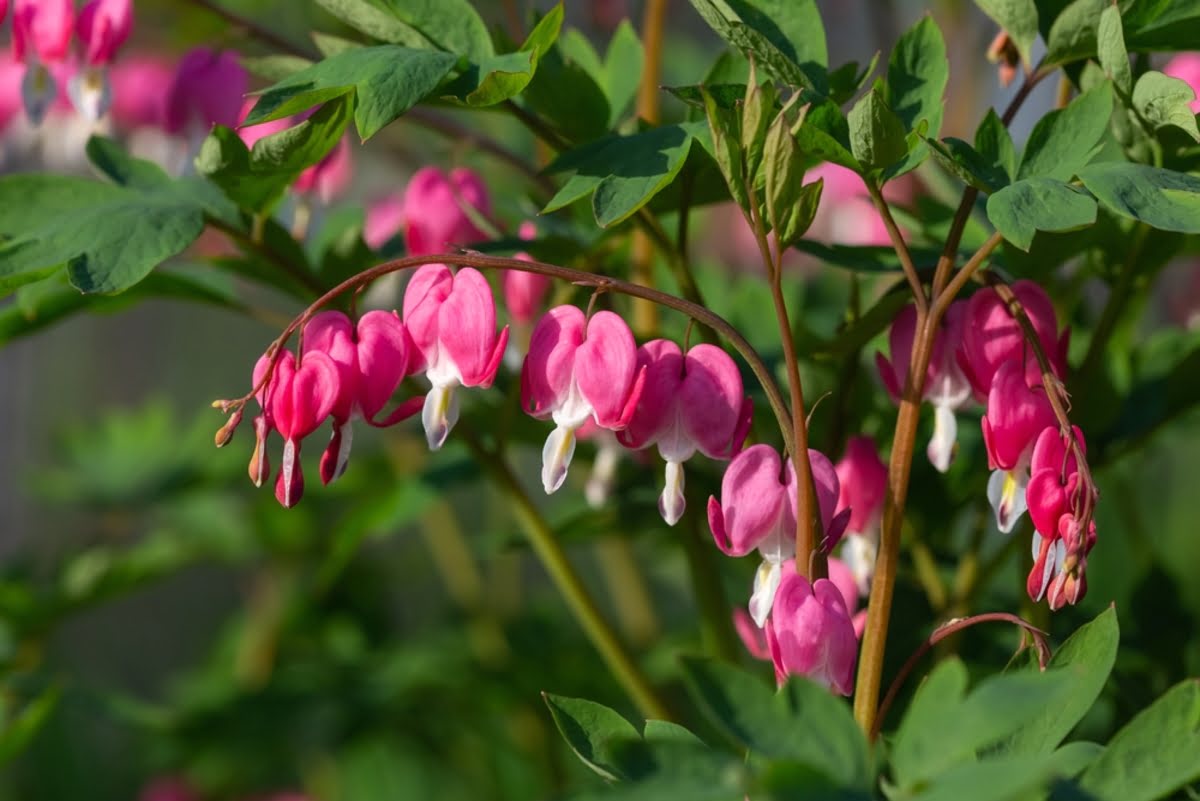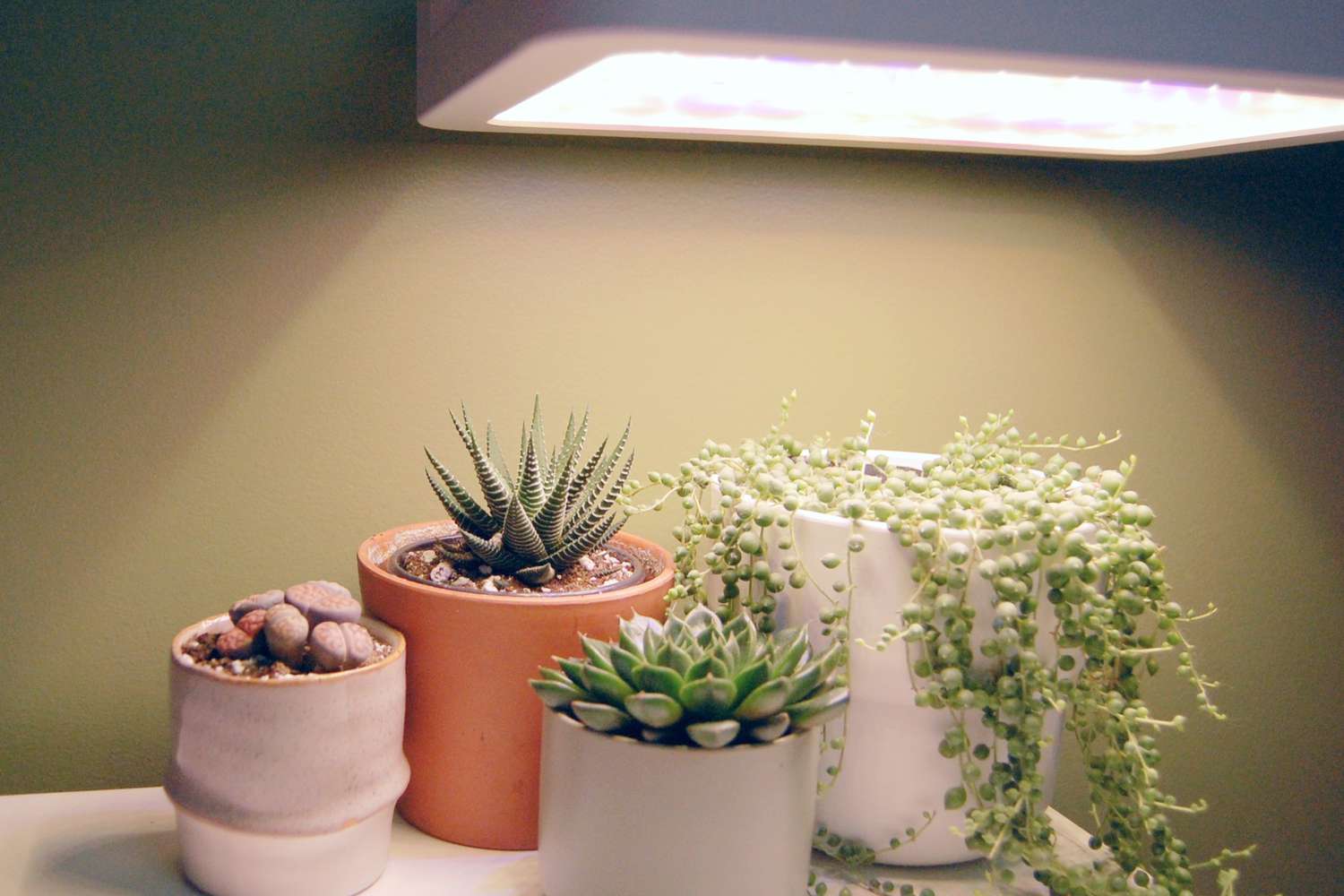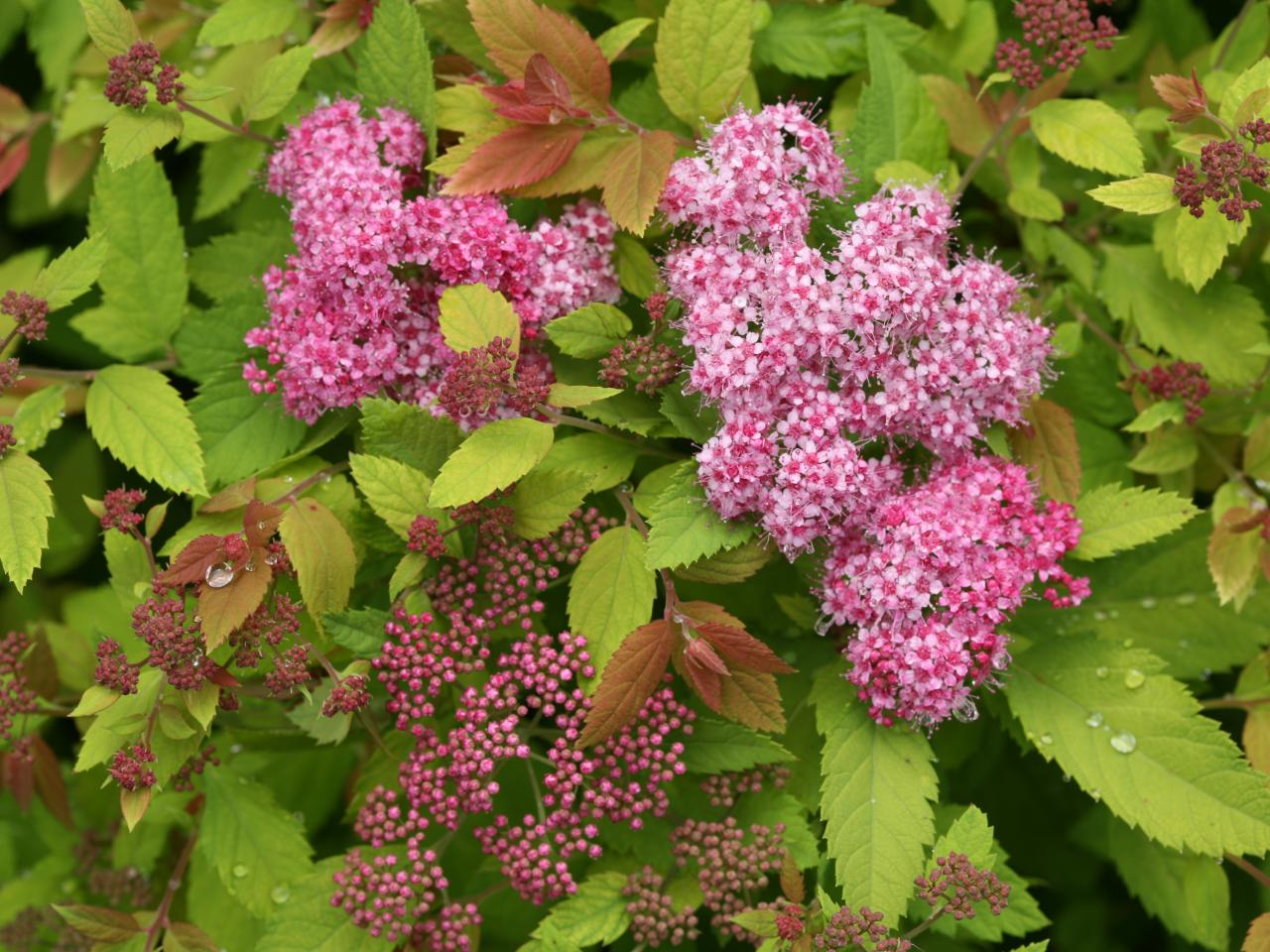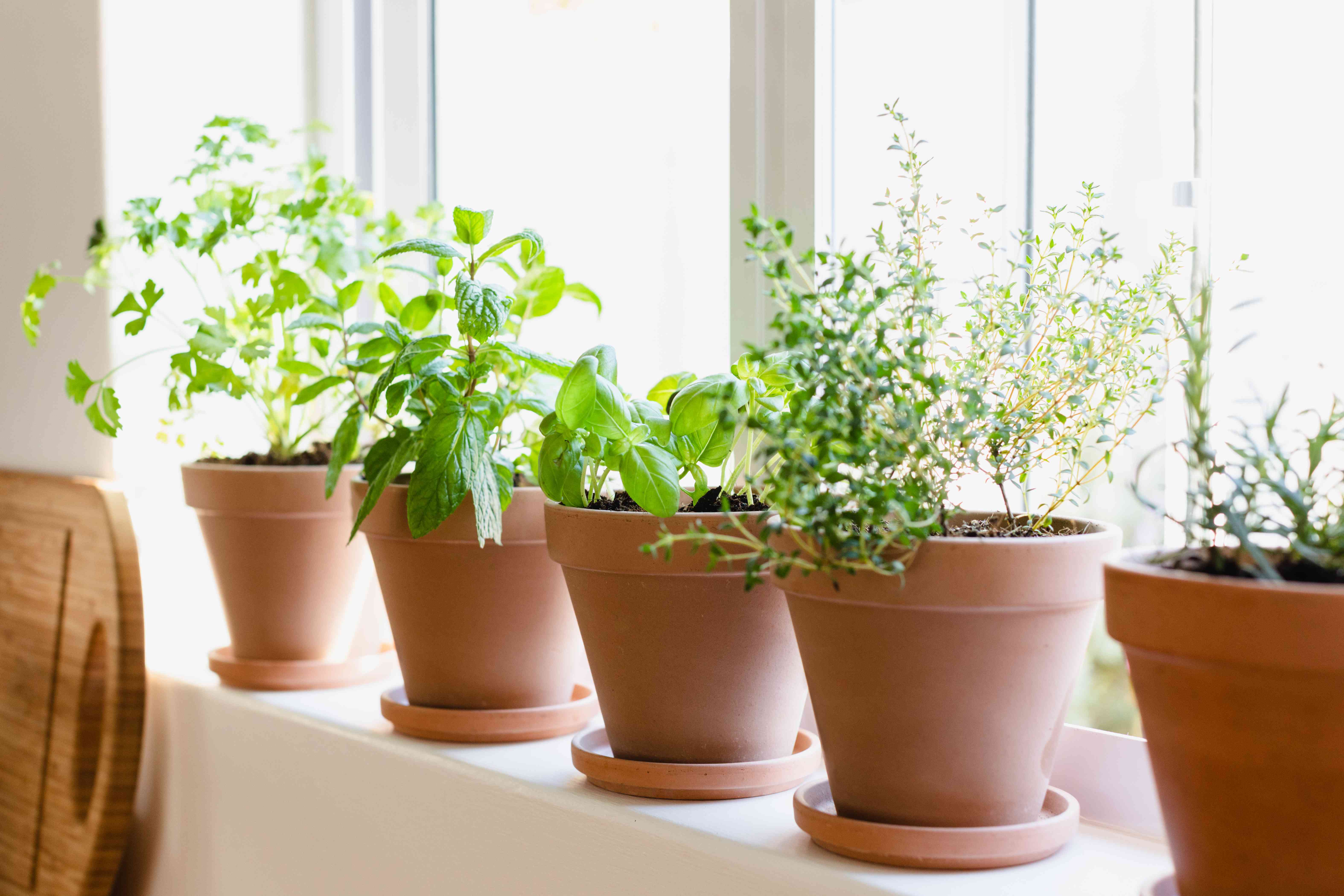Home>Types of Gardening>Ornamental Gardening>What Shrubs Grow Best In Shade
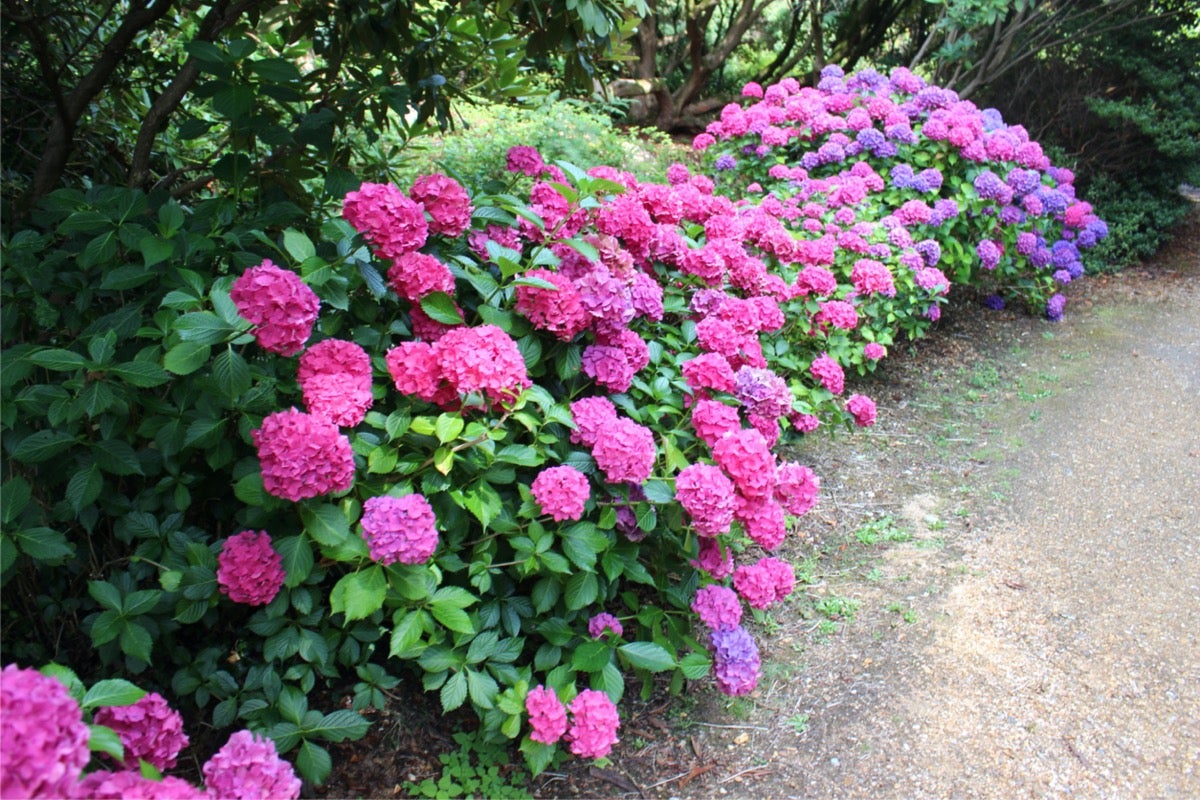

Ornamental Gardening
What Shrubs Grow Best In Shade
Modified: January 22, 2024
Discover the perfect ornamental shrubs for shade gardening. Explore our top recommendations for vibrant shrubs that thrive in shady areas.
(Many of the links in this article redirect to a specific reviewed product. Your purchase of these products through affiliate links helps to generate commission for Chicagolandgardening.com, at no extra cost. Learn more)
Table of Contents
Introduction
When it comes to creating a beautiful ornamental garden, one of the key factors to consider is the amount of sunlight your plants will receive. While some plants thrive in full sun, others prefer shady conditions. If you have a shaded area in your garden, don’t worry! There are plenty of shrubs that can add color, texture, and beauty to your shady landscape.
Shade-loving shrubs are specially adapted to grow in lower light conditions and can bring life to areas where other plants might struggle. Whether you have a partially shaded garden or a spot under a tree canopy, these shrubs will help transform your dull and dreary spots into vibrant and enchanting oases.
In this article, we will explore the top 10 shrubs that grow best in shade, offering a range of attractive features, such as colorful flowers, interesting foliage, and wildlife appeal.
So, whether you are looking to create a serene woodland garden or add variety and interest to shady areas of your landscape, these shade-loving shrubs are sure to impress.
Let’s dive in and discover the best shrubs for your shaded garden paradise.
Azaleas
Azaleas are a popular choice when it comes to adding vibrant color to shady areas of the garden. These woody shrubs belong to the Rhododendron family and come in a wide range of stunning flower colors, including shades of pink, red, purple, and white. The beautiful blooms typically appear in spring and create a stunning visual display.
Azaleas prefer dappled shade or morning sun with afternoon shade. They thrive in well-draining, acidic soil, so adding organic matter like peat moss or compost to the planting hole can help create the ideal growing conditions. Regular watering and mulching are essential to keep the soil moist and cool.
One of the benefits of growing azaleas is the variety of sizes available. From compact dwarf varieties to taller, more upright cultivars, there is an azalea to suit any garden space. They can be used as foundation plantings, borders, or mass plantings for a dazzling display.
In addition to their breathtaking flowers, azaleas also offer attractive evergreen foliage, which adds interest to the garden year-round. The glossy green leaves provide a lush backdrop to the colorful blooms and create a sense of depth and texture.
Azaleas are relatively low-maintenance plants, with minimal pruning required. However, if needed, pruning should be done immediately after flowering to ensure the next year’s blooms are not sacrificed.
Overall, azaleas are an excellent choice for bringing a burst of color to shady areas of the garden. With their stunning flowers and attractive foliage, these shrubs are sure to captivate and delight.
Rhododendrons
Rhododendrons are another popular choice for shady gardens, and they are closely related to azaleas. These stunning flowering shrubs are known for their large, showy blooms, which come in a wide range of colors, including pink, purple, red, and white. Rhododendrons thrive in partial shade and prefer acidic soil.
One of the standout features of rhododendrons is their ability to create a focal point in the garden. Their bold and vibrant flowers demand attention and can become the centerpiece of any landscape design. The size and shape of rhododendrons can vary, from compact and rounded to tall and upright, allowing for versatility in planting arrangements.
In addition to their breathtaking flowers, rhododendrons also offer attractive evergreen foliage. The glossy green leaves provide a beautiful backdrop to the blooms and add year-round interest to the garden. Some varieties even have interesting foliage textures and colors, such as variegation or bronze tones.
Rhododendrons require well-draining soil that is consistently moist. Regular watering, especially during dry periods, is crucial to keep the plants healthy and thriving. Mulching around the base of the shrubs helps retain moisture in the soil and suppresses weed growth.
Pruning rhododendrons is best done immediately after they finish flowering. Removing any dead or damaged branches helps maintain the overall health and shape of the shrub. It’s important to note that excessive pruning can reduce the following year’s bloom, so it’s recommended to only prune if necessary.
With their stunning flowers and attractive foliage, rhododendrons are a fantastic choice for adding color and elegance to shady areas of your garden. Whether used as a stand-alone specimen or in mass plantings, these shrubs are sure to create a visually striking and enchanting landscape.
Boxwoods
Boxwoods are a versatile and evergreen shrub that thrives in both sun and shade, making them an excellent choice for a variety of garden settings. These dense, compact shrubs are known for their small, glossy leaves and ability to be shaped into hedges, topiaries, or formal borders.
When grown in shade, boxwoods maintain their bushy and vibrant appearance, providing a lush and elegant backdrop to your garden. They prefer well-draining soil and benefit from regular watering to keep the roots evenly moist.
One of the advantages of boxwoods is their tolerance for pruning and shearing. They can be easily shaped and trimmed to maintain a desired size and shape. Pruning is typically done in late spring or early summer, but light trimmings can be done throughout the growing season to promote density and maintain a neat appearance.
In addition to their formal use as hedges and borders, boxwoods can also be used as accent plants in shady areas. Their dense foliage provides an excellent canvas for showcasing colorful perennial flowers or contrasting foliage plants. They can also be grown in containers, adding a touch of sophistication to patios or doorways.
Another benefit of boxwoods is their deer resistance. These sturdy shrubs are often less appetizing to deer, making them a great choice for gardens in areas with high deer populations.
Overall, boxwoods are a timeless and versatile choice for shady gardens. Their dense foliage, compact size, and easy maintenance make them an excellent option for adding structure and elegance to your outdoor space.
Japanese Pieris
Japanese Pieris, also known as Andromeda or Lily-of-the-valley shrub, is a stunning evergreen shrub that thrives in shade. Native to the forests of Japan, these shrubs offer an array of attractive features, making them a popular choice for ornamental gardens.
One of the standout features of Japanese Pieris is its striking spring flowers. Clusters of small, bell-shaped flowers adorn the branches, creating a beautiful display of white, pink, or red hues. The flowers have a delicate fragrance, attracting pollinators like bees and butterflies to the garden.
In addition to their flowers, Japanese Pieris offers year-round interest with its attractive foliage. The leaves are lance-shaped and have a glossy, dark green color. Some cultivars even have new leaves that emerge in shades of bronze or red, adding even more visual appeal to the shrub.
Japanese Pieris prefers acidic soil and grows best in locations with dappled shade or morning sun with afternoon shade. It is important to provide consistent moisture, especially during dry periods, to keep the plant healthy and thriving. Mulching around the base of the shrub helps retain moisture and keeps the soil cool.
Pruning Japanese Pieris is not typically necessary, but if needed, it should be done immediately after flowering. This allows the shrub to set flower buds for the following year. Regular fertilization with an acid-based fertilizer can help maintain healthy growth and vibrant foliage.
Whether used as an accent plant or in mass plantings, Japanese Pieris adds elegance and charm to shady areas of the garden. Its showy flowers and shiny foliage create a visual spectacle and bring a touch of enchantment to any landscape.
Hydrangeas
Hydrangeas are beloved for their stunning and abundant blooms, and they are also a great choice for adding beauty to shady areas of the garden. These deciduous shrubs come in a variety of species and cultivars, each with its own unique flower shape, color, and growth habit.
One of the standout features of hydrangeas is their showy flower heads. These blooms can range in color from white and pink to blue and purple, depending on the pH of the soil. Hydrangeas prefer partial shade, as full sun can cause their blooms to fade and wilt.
In addition to their breathtaking flowers, hydrangeas also offer beautiful foliage. The leaves are often large, dark green, and serrated, creating a lush backdrop to the colorful blooms. Many hydrangea varieties also have attractive fall foliage, with shades of red, orange, or burgundy.
Hydrangeas require well-draining soil that is kept evenly moist. Regular watering is essential, especially during dry spells, to prevent the plant from drying out. Mulching around the shrub helps retain moisture in the soil and suppresses weed growth.
Pruning hydrangeas depends on the type of hydrangea and its growth habit. Some hydrangeas bloom on new wood, while others bloom on old wood. It’s important to know the specific pruning requirements of your hydrangea variety to ensure optimal flowering. Deadheading spent blooms can help encourage more flower production.
Whether used as a focal point, mass planting, or in containers, hydrangeas add elegance, color, and charm to shady areas of the garden. Their abundant blooms and attractive foliage create a mesmerizing display and make them a favorite choice among gardeners.
Holly
Holly is a versatile and evergreen shrub that is well-known for its glossy, spiky leaves and bright red berries. While many people associate holly with festive decorations, it is also a great choice for adding interest and texture to shady areas of the garden.
There are many different species and cultivars of holly, each with its own unique growth habit and characteristics. Some varieties, like the American holly (Ilex opaca), can grow into large trees, while others have a more compact and shrub-like form.
Holly thrives in partial shade, although it can tolerate some sun as well. It prefers well-draining soil that is kept consistently moist. Regular watering is essential, especially during hot and dry periods, to prevent the shrub from becoming stressed.
One of the standout features of holly is its attractive foliage. The leaves are typically dark green and have a glossy appearance. The spiky edges of the leaves add texture and interest to the garden. In some holly varieties, the foliage can have variegated patterns or different shades of green.
In addition to their foliage, holly shrubs produce colorful berries. These berries are most often red, but some varieties produce yellow, orange, or even black berries. The berries are a food source for birds and can add a pop of color to the garden during the winter months.
Pruning holly is typically done in early spring before new growth begins. It’s important to wear gloves when pruning holly due to the sharp spines on the leaves. Regular pruning helps maintain the shape and size of the shrub and encourages bushier growth.
Whether used as a specimen plant, hedge, or foundation planting, holly adds a touch of elegance and year-round interest to shady areas of the garden. Its attractive foliage, colorful berries, and ability to tolerate different light conditions make it a versatile and popular choice among gardeners.
Mountain Laurel
Mountain Laurel, or Kalmia latifolia, is a beautiful evergreen shrub that thrives in shade. Native to the eastern United States, this shrub offers an abundance of attractive features, making it a sought-after addition to shady gardens.
The standout feature of Mountain Laurel is its stunning clusters of flowers. The flowers bloom in late spring to early summer and come in a variety of colors, including shades of pink, white, and red. The bell-shaped blooms are often intricately patterned and attract pollinators like bees and butterflies to the garden.
Mountain Laurel prefers acidic soil and partial shade, making it an excellent choice for woodland gardens or shaded borders. It thrives in well-drained soil with consistent moisture. Mulching around the base of the shrub helps retain moisture and keeps the roots cool.
In addition to its beautiful flowers, Mountain Laurel has glossy, dark green leaves that provide year-round interest. The leaves are leathery and have an attractive texture. Some varieties have marbled or variegated foliage, adding even more visual appeal to the shrub.
This evergreen shrub is relatively low-maintenance, with minimal pruning required. However, if needed, pruning should be done after flowering to avoid removing potential flower buds for the following year. Removing any dead or damaged branches also helps maintain the health and appearance of the shrub.
Whether used as a stand-alone specimen or in mass plantings, Mountain Laurel adds elegance, color, and texture to shady areas of the garden. Its striking flowers and attractive foliage create a captivating display and make it a favorite among gardeners looking to transform their shaded landscapes.
Witch Hazel
Witch Hazel, scientifically known as Hamamelis, is a unique and beautiful shrub that thrives in shade. With its unusual flowers and vibrant fall foliage, Witch Hazel is a fantastic choice for adding interest and color to shady areas of the garden.
One of the standout features of Witch Hazel is its captivating flowers. Blooming in late winter to early spring, the delicate and fragrant flowers emerge on bare branches, creating a stunning visual spectacle. The flowers can be yellow, orange, or red, depending on the variety, and they add a cheerful burst of color to the garden when most plants are still dormant.
Witch Hazel is known for its ability to tolerate a range of light conditions, including shade. However, it does best in partial shade or filtered sunlight. It prefers moist, well-draining soil and requires regular watering, especially during dry spells, to keep the roots hydrated.
In addition to its beautiful flowers, Witch Hazel displays striking fall foliage. The leaves turn shades of yellow, orange, and red, providing a colorful display as the seasons change. This makes Witch Hazel a great choice for adding fall interest to shady areas of the garden.
When it comes to pruning, Witch Hazel requires minimal maintenance. Pruning is best done immediately after flowering to avoid removing potential flower buds for the following year. Removing any dead or crowded branches helps maintain the plant’s shape and overall health.
Witch Hazel also offers medicinal benefits, as its bark and leaves have been traditionally used to make soothing remedies for various skin conditions, such as sunburn and insect bites.
Overall, Witch Hazel is a captivating and versatile shrub that thrives in shade. With its unique flowers, vibrant fall foliage, and medicinal properties, Witch Hazel brings beauty, interest, and practicality to any shaded garden.
Fothergilla
Fothergilla is a charming and lesser-known deciduous shrub that thrives in shade. With its attractive foliage, fragrant flowers, and vibrant fall colors, Fothergilla is a fantastic choice for adding beauty and interest to shady areas of the garden.
One of the standout features of Fothergilla is its unique and eye-catching foliage. The leaves are usually green in summer but can turn shades of yellow, orange, and red in the fall, creating a vibrant display of autumn colors. Some varieties also have interesting leaf textures, such as serrated or wavy edges.
Fothergilla is also known for its fragrant flowers that appear in early spring. The blooms are bottlebrush-like and range in color from white to creamy yellow. Not only do these flowers add visual appeal to the shrub, but they also emit a delightful fragrance that attracts pollinators like bees and butterflies.
When it comes to growing conditions, Fothergilla prefers moist, acidic soil and partial shade. It can tolerate a range of light conditions, but too much direct sun can result in leaf scorch. Providing consistent moisture through regular watering is crucial, especially during periods of drought.
Pruning Fothergilla is generally not necessary unless you want to shape the shrub or remove any dead or damaged branches. It’s best to do any pruning in late winter or early spring before new growth begins.
With its unique foliage, fragrant flowers, and vibrant fall colors, Fothergilla adds a touch of elegance and beauty to shady areas of the garden. Whether used as a standalone specimen or in group plantings, this underappreciated shrub is sure to impress with its captivating features.
Viburnum
Viburnums are a diverse group of deciduous and evergreen shrubs that excel in shade. With their attractive flowers, colorful berries, and beautiful foliage, viburnums are a popular choice for adding interest and beauty to shady areas of the garden.
One of the standout features of viburnums is their exquisite flowers. Different species and cultivars produce flowers in various colors, including shades of white, pink, and even purple. These blooms often appear in clusters and emit a pleasant fragrance, attracting pollinators like bees and butterflies.
In addition to their flowers, viburnums offer attractive foliage that adds visual appeal. The leaves can range from glossy and dark green to variegated or textured. Some varieties have stunning fall foliage, turning shades of red, orange, or purple, providing a brilliant display of autumn colors.
Many viburnums also produce colorful berries that add beauty and interest to the garden. These berries can be red, black, or blue, depending on the species. Not only do they add visual appeal, but they also serve as a food source for birds, attracting wildlife to your garden.
Viburnums generally prefer well-drained soil and partial shade, although they can tolerate a range of light conditions. Regular watering is important during the establishment period, and occasional supplemental watering is needed during dry spells.
Pruning viburnums is typically done in late winter or early spring before new growth begins. This helps maintain the overall shape and size of the shrub and encourages lush foliage and abundant flowers.
With their stunning flowers, colorful berries, and beautiful foliage, viburnums bring a touch of elegance and interest to shady areas of the garden. Whether used as a specimen, hedge, or mass planting, these versatile shrubs are sure to enhance the beauty of your landscape.
Conclusion
Creating a lush and vibrant ornamental garden in shady areas may seem challenging, but with the right selection of shade-loving shrubs, you can transform these dimly lit spaces into captivating and enchanting landscapes. From the stunning blooms of azaleas and rhododendrons to the evergreen foliage of boxwoods and hollies, each of the ten shrubs mentioned in this article offers unique characteristics that thrive in shade.
Incorporating these shade-loving shrubs into your garden design not only adds visual interest and beauty but also contributes to the overall health of your landscape. They provide texture, color, and structure while creating a sense of depth and tranquility. Whether you’re looking to create a serene woodland retreat, a shaded border, or add variety and interest to specific areas of your garden, these shrubs are sure to elevate the beauty and appeal of your outdoor space.
Remember to choose shrubs that are well-suited to your specific growing conditions. Consider factors such as light requirements, soil preferences, and moisture levels. It’s also important to provide proper care, including regular watering, mulching, and prudent pruning, to ensure the health and longevity of your shade-loving shrubs.
With their adaptability, resilience, and ability to thrive in shaded environments, these ten shrubs are excellent options for creating a beautiful and flourishing ornamental garden in shady areas. So, embrace the natural beauty of your shady spaces and let these shrubs add vibrancy, color, and charm to your landscape.
